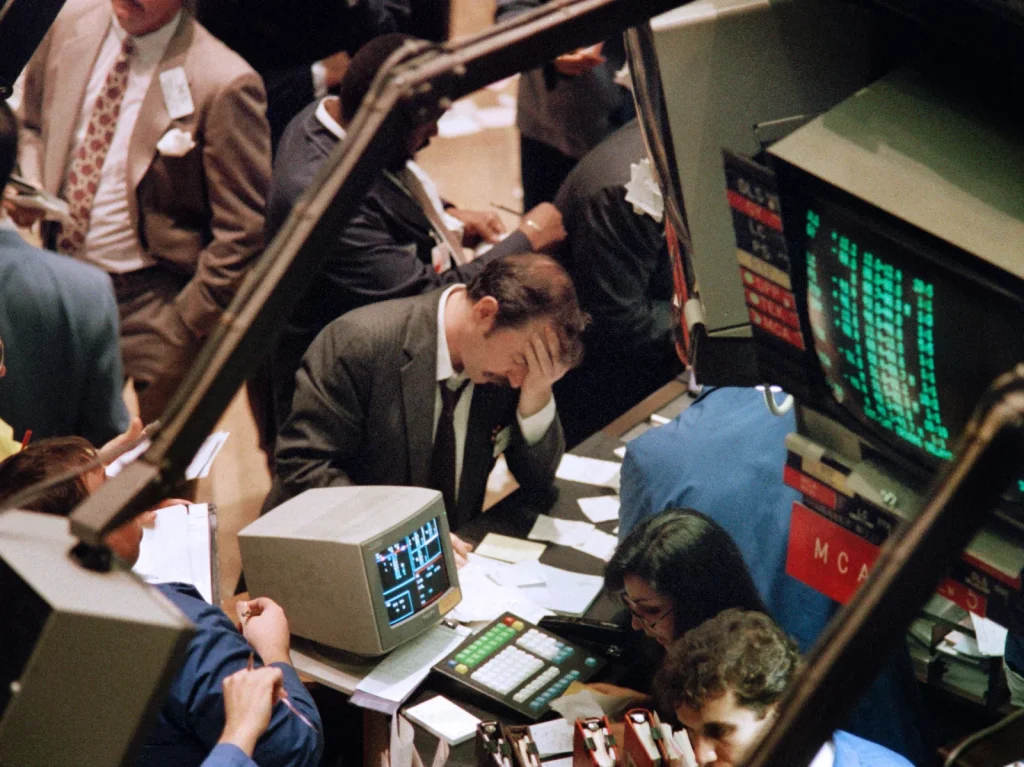Jesse Livermore: The Legendary Trader’s Life and Legacy

Jesse Livermore was an American stock trader who is still remembered today for his legendary trading skills. He was a pioneer of day trading and one of the most successful traders of his time. Livermore’s life was full of contradictions and controversies, but his trading strategies and insights have influenced many traders over the years.
Livermore’s rise to fame began in the early 1900s when he made a fortune by short-selling stocks during the Panic of 1907. He continued to make millions through his trading strategies and became one of the richest people in the world. However, his fortunes took a turn for the worse during the Great Depression, and he eventually lost most of his wealth. Despite his tragic end, Livermore’s trading insights and strategies continue to inspire traders to this day.
Livermore’s story is a fascinating one that sheds light on the world of trading and speculation. This article will delve into the life and legacy of Jesse Livermore, exploring his rise to fame, his trading strategies, and his influence on the stock market and Wall Street.
Early Life and Career
Jesse Lauriston Livermore was born on July 26, 1877, in Shrewsbury, Massachusetts. He was the youngest of three children and had a sister named Mabel Loraine Blethen and a brother called Elliot Livermore. His father, Hiram Brooks Livermore, was a farmer, and his mother’s name was Laura Esther Livermore.
Livermore started his career as a stock trader at the age of 14. He worked as a quote boy on the trading floor of the Boston Stock Exchange, where he learned the basics of trading and began to develop his own trading strategies. He quickly became a successful trader and earned a reputation for his ability to read the market.
In 1891, Livermore moved to New York City, where he began trading stocks for his own account. He became a member of the New York Stock Exchange in 1898 and continued to trade stocks successfully. He also began trading commodities and became a member of the Chicago Board of Trade.
In 1901, Livermore moved to St. Louis and started trading for Paine Webber. He continued to trade successfully and made a fortune. However, he lost most of his fortune in 1907 during the Panic of 1907. He then moved back to New York City and started trading again.
During the early part of his career, Livermore used bucket shops to execute his trades. Bucket shops were illegal brokerage firms that allowed individuals to speculate on the stock market without actually buying or selling any stocks. Livermore was able to make a fortune using bucket shops, but he also lost a lot of money.
Livermore’s career was not without its ups and downs. He made several fortunes and lost them all. He also suffered from depression and alcoholism. Despite these setbacks, he continued to trade and remained one of the most successful traders of his time.
Trading Success and Strategies
Jesse Livermore’s success as a trader is legendary, and his strategies are still studied and emulated today. His ability to identify patterns and trends in the market allowed him to make profitable trades consistently.
Patterns
Livermore was known for his ability to spot patterns in the market, particularly in the tape. He would watch the ticker closely, looking for signs of bullish or bearish behavior. He also paid attention to pivotal points, such as when a stock broke through a key resistance level or when the market was in a state of panic.
Trends
Livermore believed that the market moved in trends, and that it was possible to identify and profit from these trends. He would look for stocks that were trending up or down, and would enter trades accordingly. He also paid attention to the overall market trend, and would adjust his trading strategy accordingly.
Livermore’s trading rules were based on his experience and knowledge of the market. He believed in taking a balanced approach to trading, and emphasized the importance of emotional balance and discipline. He also stressed the importance of cutting losses quickly, and not letting losing positions drag on.
Livermore’s success was not without its challenges. He famously suffered a series of losses that led to a margin call and bankruptcy. However, he was able to bounce back and continue trading successfully.
Livermore’s legacy as a trader and Wall Street legend has inspired generations of stock and commodity traders. His approach to trading, which emphasized trial and error and learning from mistakes, is still relevant today. As he famously said, “there is nothing new in Wall Street. There can’t be because speculation is as old as the hills. Whatever happens in the stock market today has happened before and will happen again.”
Overall, Livermore’s success as a trader was based on his ability to identify patterns and trends, his disciplined approach to trading, and his willingness to learn from his mistakes. These lessons are still valuable for anyone looking to learn how to trade stocks or commodities at the right time.
Personal Life and Legacy
Jesse Livermore was born on July 26, 1877, in Shrewsbury, Massachusetts. He married Nettie Jordan in 1900, but the couple separated in 1917. Livermore later married his second wife, Harriet Metz Noble, in 1926. They remained together until his death.
Livermore’s personal life was marked by both successes and failures. He was known for his lavish spending and extravagant lifestyle, which often led to financial difficulties. Despite his wealth, he experienced several bankruptcies throughout his life.
Despite his personal struggles, Livermore’s legacy in the financial world remains significant. He is widely regarded as a pioneer of day trading and is remembered for his incredible success in the stock market. His book, “Reminiscences of a Stock Operator,” remains a popular read among traders and investors.
Livermore’s records show that he made and lost big money several times throughout his career. He reportedly made his first fortune during the Panic of 1907, when he correctly predicted the market’s direction. He then lost his fortune during the Panic of 1914, only to make it back and more during the Roaring Twenties.
Livermore’s legacy continues to influence traders and investors today. His trading strategies and philosophy are still studied and applied by professionals in the financial industry. Despite his personal struggles, Livermore’s impact on the world of finance is undeniable.












